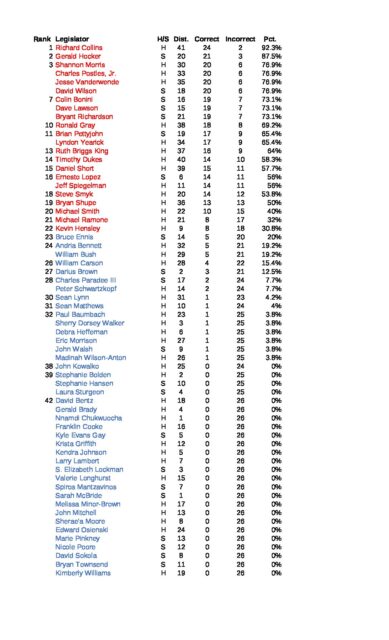You know, I figured just as soon as I put old number 96 to bed that my e-mail box would fill up with interesting tidbits, so it wouldn’t be nearly as long before I got to number 97. So let’s see what I have here.
A look at theology
People tend to think of Erick Erickson as just a radio personality and pundit, but it’s not as well known that he’s studied divinity. So when he talks about religion it makes my ears perk up, and this recent column of his was one of those times.
Christians need to be preaching Jesus, not Christianity. We need to preach about the end and the return and the world made new. It is fantastical and supernatural and unbelievable for so many. But it is real and right and true and will give the hopeless hope.
Erick Erickson, “Groaning for Justice: The Theology of What is Happening”, June 25, 2020
It sounds a lot like my church. But it’s worth remembering that on one side is the world and on the other side is God, expressed in the Trinity of the Father, the Son, and the Holy Spirit. Perhaps I have a simplistic perspective about it all, but then again I came to the game later in life than a lot of other people so my flaws were more apparent.
I believe that when Jesus said no one comes to the Father but through him that He was absolutely right. There’s nothing wrong with trying to make the world better but there should always be that end goal in mind, too.
Is there any reason for college?
This may seem strange to say as an alumnus of Miami University, but insofar as career preparation I learned as much in a year of work as I did in securing my four-year degree. (However, I did manage to consume many “Gobblers” and adult beverages from various eating and drinking establishments around Oxford, Ohio, and I got to go see Division I sports for free. So there was that.)
By the same token, Victor Davis Hanson has toiled in the academic field for decades – yet he delivers a scathing critique of college life and educational achievement in 2020, 34 years after I walked away from Millett Hall with my diploma case in hand.
31 years later I was witness to a similar scene but under wildly different circumstances, as my wife received her bachelor’s degree from a nationally-recognized college after taking online courses tailored to the working world. For these folks, their campus was the Washington, D.C. area and beyond, and hundreds of them were in what was then the Verizon Center for their big day. They received their degrees after enduring a lifestyle of trying to juggle work, kids, and other responsibilities with their academics as opposed to being cloistered on a campus and shuttling between academic halls, student centers, and their dorms. That was my world in the mid-1980s as a snot-nosed kid from a small Ohio town.
Yet many kids still do the same thing I did four decades ago, and the problem with that approach is that it’s rapidly becoming an information silo. Kids learn a lot about things of little importance in real life then wonder why it bites them in the ass. I remember pounding the pavement for a job right out of college then finally taking something outside my field to tide me over – turns out I was there less than a month before I got the break I needed; then again I was in an avocation where there was demand in the real world so it finally needed my supply.
And my alma mater wonders why I ignore their pleas for alumni donations.
More from smart people
How this guy ever got to be governor of his state – and then re-elected – often mystifies me. IMHO he was really too smart for the job, and the same went for being President. I think Bobby Jindal could have been the next Calvin Coolidge, a President who exhibited admirable restraint of his powers and led the government to do the same.
Recently he penned an op-ed for the Washington Examiner where he focused on some items he saw as long-term trends accelerated by the onset of the Wuhan flu. This one was the one that piqued my interest the most:
De-densification: Elevators, mass transit, and air-conditioned spaces, all critical components of urban living, will be rendered safe again one day. Yet, the nation’s most successful cities were already victims of their own success, with the rising cost of living pushing working families to the suburbs and exurbs. Workers are going to demand more flexible work arrangements and less time wasted commuting. Remote work and virtual meetings will allow many office workers to be productive in the exurbs and in the country. Wealthy families will join them with getaway homes, and companies will require less-dense and smaller offices. Smaller communities near urban centers will benefit and become more economically viable for their permanent residents. The economic efficiencies that have driven urbanization will still continue to be compelling, and first-tier cities especially will reinvent themselves and continue to attract immigrants and new businesses.
“How the COVID-19 pandemic will change us”, Bobby Jindal, Washington Examiner, June 24, 2020.
The initial push to the suburbs in the postwar era was fueled by the surge of new families looking for room to grow, coupled with the inexpensive cost of gasoline and car maintenance and expansion of highway construction allowing commuters to bypass mass transit. Suddenly small towns that were once on the outskirts of metro areas and surrounded by cornfields became the loose center of dozens of subdivisions looped together by beltway interstates surrounding the city core. My parents did this in spades, bypassing suburbia altogether to buy five rural acres for three active boys to play ball on and dealing with a half-hour or more commute.
Being in the design world, I’ve seen the push for a new urbanism. For example, in nearby Salisbury their mayor Jake Day has pushed for a new style of downtown revitalization, attempting to bring in mixed-use development accessible by multiple modes of transportation. Surface parking on city-owned lots downtown is rapidly becoming a thing of the past as lots are sold to developers.
Fortunately for Day, Salisbury is still a small enough city that it doesn’t suffer from the maladies of Baltimore, Washington, Philadelphia, and others which have seen their urban core rot away from a toxic combination of crime, poverty, and lack of opportunity. It could yet go that way, or it could become a destination precisely because it’s been small enough to escape these issues – the sort of small town Jindal envisions succeeding thanks to the remote technology we now have.
But these urban escapees have another close-by alternative which is also retiree-friendly – if we don’t screw it up.
Picking too many losers
The state of Delaware lags the field in state-level GDP growth these days, one survey placing the First State last in the nation.
Perhaps a reason for this, argues the group A Better Delaware, is that our state government is terrible at determining winners and losers. As it has often turned out, the well-connected are the winners and taxpayers are the losers, and the group goes through some examples in this recent piece.
As I see it, job creation is about filling needs. An entrepreneur sees a market void and figures out a way to fill it, then once that venture is a go he or she may find the work is too much for one person to handle. Suddenly they’re signing the front of a paycheck, and the measure of a business-friendly state is just how easily that employer can get to that point without feeling violated from the anal rape of a corrupt system installed to grease the palms of a thousand bureaucrats. Somehow Delaware seems to believe that making life easier for those who promise scores of jobs without figuring out the market void is a good thing to do. I tend to like my strategy better.
The library
I was recently introduced to an interesting website in a unique way: one of its employees requested to purchase a paper copy of The Rise and Fall of the TEA Party. So I autographed it and sent it to Tennessee for his enjoyment. (By the way, I have several more available.)
So while Ammo.com sells – as you may guess – many different varieties of ammunition, they also feature what’s called the Resistance Library: a collection of articles on many and varied topics. (Actually, the whole site is worth exploring.) The post my newfound friend was dying to share with me, though, was on “Policing for Profit.”
Civil asset forfeiture is a popular concept with the “if you don’t do anything wrong, you have nothing to worry about” crowd; the same ones who shout “blue lives matter!” (And they do, but so does the law.) In reading this lengthy, well-written treatise on the subject I found out that Delaware is a state which is one of the worst in that regard.
And civil asset forfeiture laws are difficult to change because there are two large lobbies already stacked against these efforts: law enforcement and local government. Imagine what $200,000 seized could do for a local government’s bottom line when they may spend $2 million on a police department annually. Never mind it’s not their property and they have only suspicion that it was gathered illegally. It’s like crack cocaine to an addict: wrongly or not, they can’t pass it up. We need to send our state to a proverbial NA meeting next year when the General Assembly reconvenes.
More bad advice
I like to end on a light-hearted note when I can, and what better way than to poke fun at those who tell me how to run this place?
Hello monoblogue.us team:
As you know because of Global pandemic, the world has shut down and a big question mark on sustainability of business.
We are connecting the business owner to create a high standard for their business website and marketing strategy. To start this, we recommend to upgrade the website to more customer friendly.
If you have same idea in your mind, Let’s discuss about redesign of your website in economic cost.
A really badly written e-mail.
I can’t decide whether this came from China, India, or some other third-world country where English is taught as a second language. (In this case, maybe third.)
Fortunately, I didn’t shut down during the pandemic. Now I won’t say that I was terribly productive during the time span, but the college degree I alluded to way above led me to a job deemed “essential” so I have been working my usual full-time hours. Even so, I sustain into my fifteenth year of this site. (I even outlasted Red Maryland.)
My site is not really a business site, but I do have a marketing strategy: write good sh*t. It’s even customer-friendly because I kept out the offending letter.
And, in case this guy missed it, I redesigned my website a couple years ago, finally retiring old “Black Lucas” after nearly a decade of service. I still miss that theme sometimes but I like the back end that goes with the current “Twenty Sixteen” theme much better.
So I think I have flogged the dead horse of my inbox enough for one visit. I didn’t even get to the silliness that’s the Delaware governor’s race, but maybe I’ll hold onto that for a standalone post after all.
Programming note
Once we clear the filing deadline this coming Tuesday I’m going to add my Delaware political sidebar with all the primary and general election candidates and then the following Monday or Tuesday release the 2019-20 monoblogue Accountability Project – Delaware edition. The delay is because I have to determine whether the legislators involved get a free ride in November or not.
Because the Delaware session was truncated this year, I decided to simply amend the 2019 edition to use four votes this year and drop the least impactful four votes from last year to maintain 25 separate votes. You’ll see what I mean when I put it up later this month.





